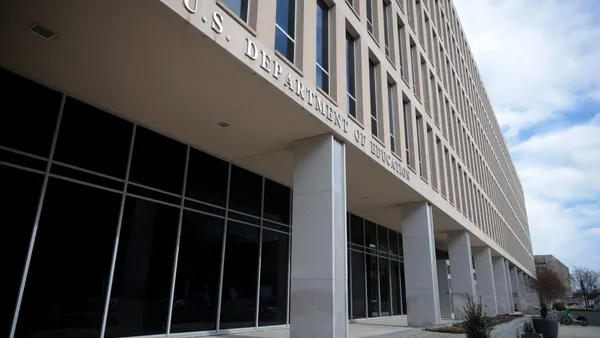Dive Brief:
- Teacher turnover contributes to higher rates of student suspensions and office disciplinary referrals, according to a study based on New York City Public Schools data published by the New York University Steinhardt School of Culture, Education, and Human Development.
- A teacher’s departure midyear increased the probability of students receiving a suspension or referral by 20% to 30% on average for each year of experience the departing teacher had, according to the study, which examined data for grades 6-12 over 11 academic years between 2011-12 and 2021-22.
- On the other hand, students are less likely to be disciplined when teachers stay. A 4.5% drop in teachers leaving midyear led to an average 2.4% reduction in suspensions and 1.9% drop in referrals, while a 13.3% decrease in year-end teacher departures led to average drops of 7.2% and 5.7%, respectively.
Dive Insight:
The increases in discipline rates due to staffing instability were disproportionately concentrated among Black students and others from underrepresented backgrounds, according to the study.
Researchers analyzed student characteristics like demographics, special education status and disciplinary records, as well as school characteristics such as enrollment and student-teacher ratio, and teacher data like years of experience, full-time status and resignation timing.
Those findings were not particularly surprising to Luis Rodriguez, professor of educational leadership and policy studies at NYU Steinhardt, who conducted the study in partnership with Christopher Redding, professor of educational leadership and policy from University of Florida.
"These findings are not surprising: Teacher turnover predicts increased use of suspensions and office referrals for students; that is concentrated in Black students,” said Rodriguez.
Rodriguez and Redding also weren’t especially surprised by the correlations with both teacher experience level and when the teacher left during the school year.
“That was something we tried to highlight,” Rodriguez said. “Teachers who left in the middle of the school year, that mattered as well. If those who left had more experience, we saw a larger jump in exclusionary discipline the following year. That gives us a sense of what matters.”
The fact that the study’s findings suggest that turnover significantly impacts school climate in addition to presenting a workforce challenge means that policymakers and school leaders need to design strategies to both reduce turnover and mitigate its effects through mentorship, targeted professional development, and fostering inclusive school cultures, Rodriguez said.
“What they should be focused on, in response to teachers leaving, is what resources need to be allocated,” he said. “Our study extends the picture of what that means — that turnover is harmful as it relates to school discipline. It’s not just that leaders should be concerned about how student academic performance is affected.”
Newer teachers likely need more training to effectively address behavioral issues — both inside and outside of the classroom — without necessarily always resorting to sending a student to the principal’s office for a referral or suspension, Rodriguez said. That's something that could be addressed during the onboarding process for new teachers, he added.
“Sometimes, teachers don’t have rigorous supports as they’re starting out in a professional role or even in the school environment," Rodriguez said. "It might be crucial even for teachers who have experience but are newer to a particular school to have support as they transition.”












